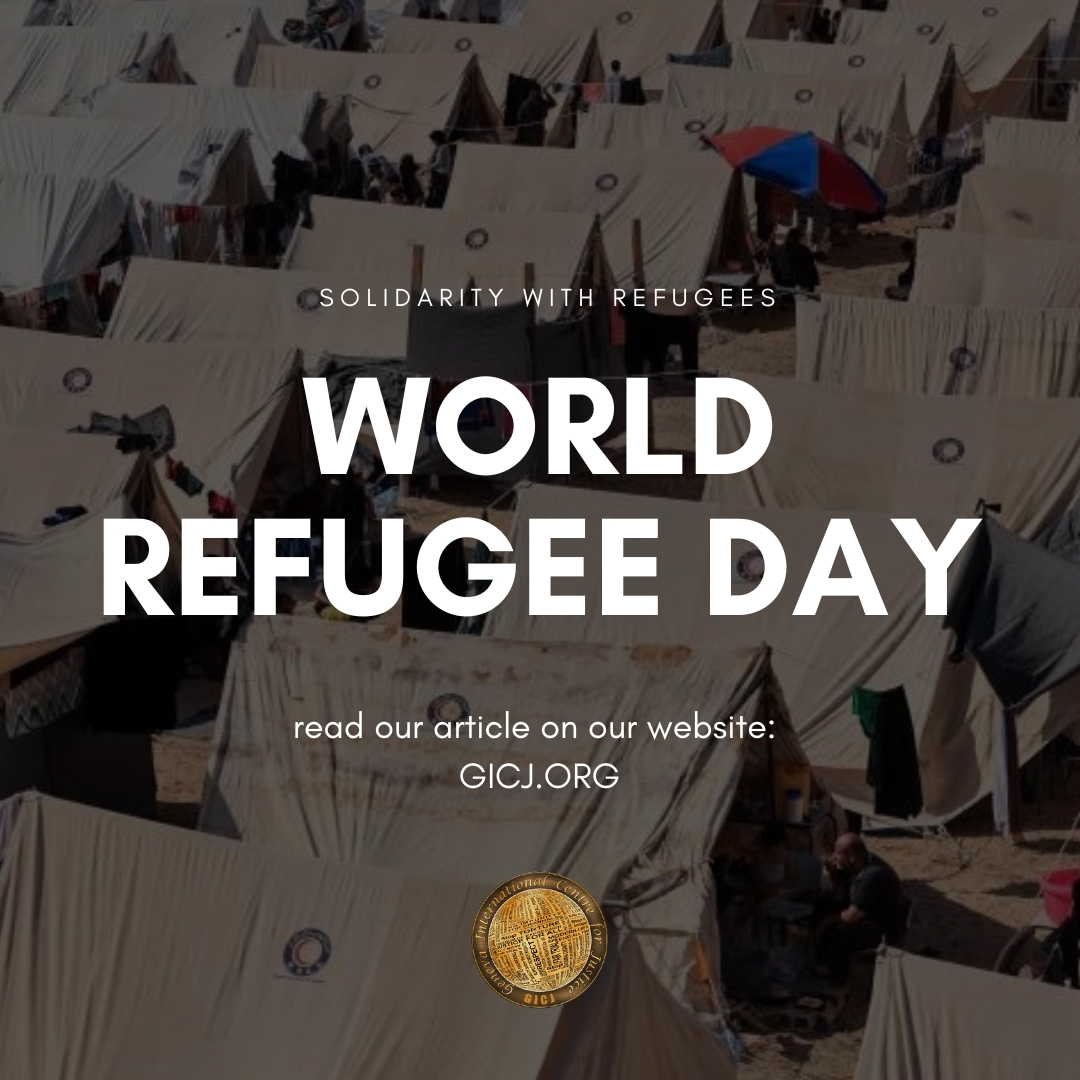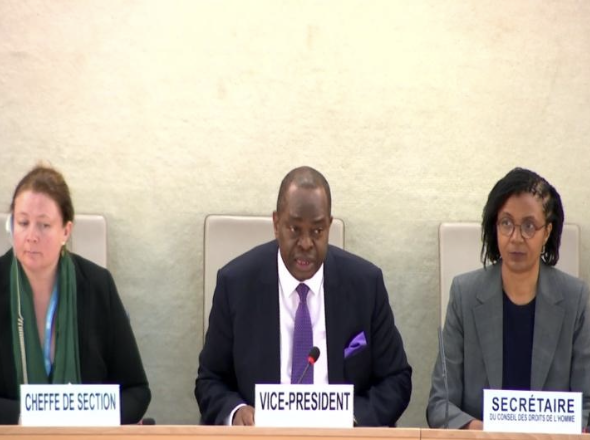
Background
World Refugee Day takes place every year on June 20 to honor refugees worldwide. The first global celebration of World Refugee Day occurred on June 20, 2001, marking the 50th anniversary of the 1951 Refugee Convention[1]. Initially called Africa Refugee Day, the United Nations General Assembly renamed it in December 2000 to recognize it as an international day. It celebrates the strength and courage of those who flee their home countries to escape conflict or persecution. This day highlights the rights, needs, and dreams of refugees, helping to mobilize political will and resources so they can thrive, not just survive. While it's crucial to protect and improve the lives of refugees every day, World Refugee Day focuses global attention on their struggles.
As for the end of 2023, the UN Refugee Agency reported that the global refugee population increased by 7% to reach 43.4 million. This total includes 31.6 million refugees and people in refugee-like situations, 5.8 million others needing international protection under UNHCR's mandate, and 6 million Palestinian refugees under UNRWA's mandate (This report does not include January-June 2024 updates on Israel's war on Gaza). Compared to a decade ago, the total number of refugees globally has more than tripled. Additionally, an estimated 117.3 million people remained forcibly displaced at the end of 2023. They were forced to flee due to persecution, conflict, violence, human rights violations, and events that seriously disturbed public order.
The largest proportion of refugees globally were from Afghanistan and Syria, both with 6.4 million each, making up one-third of all refugees under UNHCR’s mandate. Venezuela followed with 6.1 million refugees and others needing international protection, and Ukraine with 6.0 million refugees. Most refugees stay near their country of origin, with 69% hosted in neighboring countries at the end of 2023. Low- and middle-income countries continue to host the majority of the world’s refugees, with 75% living in these regions.
Key Displacement Situations 2023-2024 Period
- Sudan
Conflict in Sudan broke out in April 2023 between the Sudanese Armed Forces and the Rapid Support Forces, triggering one of the largest humanitarian and displacement crises in the world. As violence quickly spread from the capital, Khartoum, to other parts of the country, more than 6 million people in Sudan had fled by the end of the year, with an additional 1.2 million seeking refuge in neighboring countries. The number of Sudanese refugees and asylum-seekers globally increased by at least 826,800 during the year, reaching 1.8 million. Almost all were hosted by neighboring countries, including the Central African Republic, Chad, Egypt, Ethiopia, and South Sudan.
Before the war, Sudan was already experiencing a severe humanitarian crisis, with 3.6 million people internally displaced. By the end of the year, this number had risen to 9.1 million, the highest number ever recorded of people remaining displaced within their own country. Hunger is widespread, with over 20 million people (42% of the entire population) facing acute food insecurity, particularly in conflict areas that are hard to reach. Additionally, before the latest conflict, Sudan was home to one million refugees, primarily from Eritrea, Ethiopia, South Sudan, and the Syrian Arab Republic.
As of May 2024, operational data shows that the number of new displacements since April 2023 has risen to over 7.1 million within Sudan, with a further 1.9 million people fleeing to neighboring countries.
- Palestine
Israel's war on Gaza has severely impacted the Palestinian civilian population. The humanitarian situation is extremely dire, with all 2.2 million inhabitants facing acute food insecurity and famine.
Between October and December 2023, UNRWA estimated that up to 1.7 million people (over 75% of the population) were displaced within the Gaza Strip, with some having been forced to flee multiple times. By the end of 2023, there were 6 million Palestine refugees under UNRWA’s mandate, with 1.6 million in the Gaza Strip. UNRWA also estimated that two-thirds of the Palestine refugees in the Gaza Strip have become internally displaced in 2023, further compounding existing vulnerabilities.
In May 2024, the brutal assault by Israel on the Rafah tent camp, resulting in the deaths of at least 40 Palestinians, sparked widespread condemnation. Qatar denounced the attack as a grave violation of international laws, while the UN special rapporteur called for sanctions against Israel. Over the span of about six weeks, more than 1.3 million people fled from Rafah to other parts of Gaza, according to the United Nations Relief and Works Agency for Palestine Refugees in the Near East. The agency also reported the tragic killing of 193 of its staff members during this period. As of June 17, 2024 Israeli forces continue military operations in Rafah and other parts of southern Gaza, despite Israel's announced tactical pauses to allow humanitarian aid, reported UNRWA chief Philippe Lazzarini. Humanitarian officials have repeatedly highlighted that Israeli inspections and ongoing attacks have significantly hindered aid deliveries. Israeli ground troops have closed the crucial Rafah border crossing with Egypt.
Even before the ground operation in Rafah, the flow of humanitarian aid into Gaza was insufficient. The number of trucks entering the southern Gaza Strip numbered only in the hundreds, far below what is needed to meet the daily needs of the enclave's 2.3 million inhabitants. As the Israeli assault on Gaza enters its ninth month, displaced Palestinians urgently require essentials such as food, water, sanitation, shelter, and healthcare. Many are living near piles of waste, which increases health risks in an already dire situation.
- Myanmar
In 2023, escalating violence following Myanmar's military takeover in February 2021 led to over 1.3 million people being displaced within the country. This brought the total number of internally displaced persons (IDPs) in Myanmar to more than 2.6 million by the end of the year. Additionally, about 1.3 million refugees and asylum-seekers from Myanmar found shelter in other countries. Among them, nearly one million Rohingya refugees remain stateless, having fled Myanmar seven years ago. The majority reside in Cox's Bazar refugee camp in Bangladesh, where reliance on humanitarian aid is widespread amidst deteriorating security conditions. Conditions in these camps have driven Rohingya refugees to take perilous sea routes to Indonesia and Malaysia, known as some of the deadliest in the world. Reports indicate that approximately one Rohingya died or went missing for every eight who attempted this journey in 2023.
In Myanmar's southeastern states bordering Thailand, ongoing violence, military attacks, and airstrikes have driven people to flee. Civil unrest in urban areas and persecution of specific groups have also contributed to displacement. The number of internally displaced persons (IDPs) in Tanintharyi, Bago, Mon, Kayin, Kayah, and southern Shan states increased sharply from 355,600 in January 2023 to 468,600 in June and 693,300 by December of the same year. As of February 12, 2024, the number of IDPs in these states and regions reached 754,000.
Although many refugees have returned to Myanmar, thousands of internally displaced persons (IDPs) near the Thai-Myanmar border still face significant risks. These IDPs, along with newly displaced individuals, may attempt to cross into Thailand to escape persecution and ongoing violence.
- Afghanistan
Afghans have endured over 40 years of conflict, natural disasters, chronic poverty, food insecurity, and the challenges of the COVID-19 pandemic, compounded most recently by the Taliban takeover. The events preceding the Taliban's seizure of Kabul in August 2021 escalated instability and violence in Afghanistan, resulting in heightened human suffering and widespread displacement.
As of recent reports, nearly 10.9 million Afghans are displaced, primarily within Afghanistan or in neighboring countries. In 2023, the global number of Afghan refugees increased by 741,400, reaching 6.4 million. This rise largely reflects updated population estimates from Iran and Pakistan. Sustainable return opportunities are scarce, exacerbated by severe food insecurity affecting nearly half of Afghanistan's population of over 40 million. Millions continue to be displaced within the country, facing ongoing challenges and instability.
Violence has been the primary driver of involuntary displacement among Afghans, with 5.9 million people either internally displaced or fleeing the country since 2001, mainly to Pakistan and Iran, where they face uncertain political conditions. Iranian authorities often deport undocumented Afghans without giving them a chance to prove their right to stay or apply for asylum.
Returning Afghan refugees come back to a country still beset by conflict, poverty, and lawlessness. A February 2023 World Food Program report highlighted that "4 million children suffer from acute malnutrition, including 3.2 million under the age of five." Access to healthcare remains extremely limited, with many unable to access even basic services. In conflict zones, healthcare facilities are frequently targeted by militants, making seeking medical help perilous.
- Other Regions
In 2023, global displacement crises persisted across several regions. In Ukraine, ongoing conflict led to approximately three-quarters of a million new internal displacements, while return movements reduced the total internally displaced population to 3.7 million by year-end. The number of Ukrainian refugees and asylum-seekers rose to 6 million as the country continued to grapple with instability. In the Democratic Republic of the Congo, renewed fighting in the east resulted in 3.8 million new internal displacements, with 6.7 million remaining displaced overall. Somalia faced ongoing insecurity and environmental challenges, displacing 673,000 due to conflict and 2 million due to natural disasters, and Syrian conflict exacerbated displacement, with 7.2 million internally displaced and 6.5 million refugees globally.
Haiti saw 311,000 internally displaced amid widespread gang violence. The indiscriminate violence perpetrated by gangs has intensified, leading to widespread fear and insecurity among Haitian communities. As a result, 311,000 people remained internally displaced within the country by the end of the 2023 year, seeking safety and shelter amidst ongoing turmoil. Nearly half of Haiti's population, totaling 11.4 million, required humanitarian assistance due to the deteriorating security situation and socio-economic challenges exacerbated by political instability. The increase in internal displacement reflects a deepening humanitarian crisis, with access to basic services such as healthcare, education, and livelihoods severely limited. Efforts to provide aid and protection to displaced Haitians have been hampered by the volatile security environment, further exacerbating the plight of those affected by displacement in Haiti.
On this World Refugee Day, Geneva International Centre for Justice (GICJ) stands in solidarity with displaced communities worldwide. We emphasize that addressing refugee crises goes beyond mere assessment of displacement; it requires effective protection mechanisms and proactive conflict prevention. GICJ urgently calls for:
- An immediate cessation of attacks on refugee camps in Rafah and other regions in Palestine.
- Continued advocacy by international organizations to compel governments and entities to implement comprehensive policies and reforms that grant nationality to stateless populations and prevent statelessness.
- Heightened global awareness about ongoing violations of basic rights endured by refugee populations post-displacement.
- Ensured access to essential services including protection, healthcare, education, and aid distribution for displaced communities, as mandated under international law.
GICJ reaffirms that protecting refugees and preventing conflicts are fundamental obligations that must be prioritized by all nations and international bodies.
[1] The Convention Relating to the Status of Refugees, also known as the 1951 Refugee Convention or the Geneva Convention of 28 July 1951, is a United Nations multilateral treaty. It defines who a refugee is and sets out the rights of individuals who are granted asylum. Additionally, it outlines the responsibilities of nations that grant asylum.







